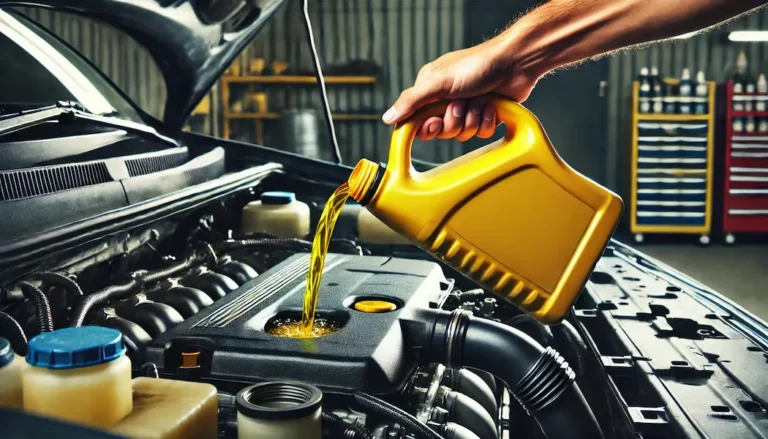Mini Cooper Engine Light: Causes and Fixes

Key Takeaway
You know that moment when you’re driving and suddenly see that dreaded engine light? Yeah, I’ve been there, and it’s a real heart-sinker! But don’t panic—understanding what that little light means can turn your anxiety into confidence. In this article, I’ll share the common reasons your engine light might pop on, how to troubleshoot the issue, and some preventive tips to keep your Mini Cooper running like a champ.
Introduction
Seeing that engine light can feel like the start of a horror movie—one minute, you’re cruising along, and the next, your car is sending you a signal that something’s not right. It’s completely normal to feel a bit stressed out in these moments, but rest assured, you’re not alone. Many drivers experience this, and the good news is that most of the time, the issue isn’t as catastrophic as it seems. By familiarizing yourself with the common causes and solutions, you can take charge of your Mini Cooper’s health and avoid those unnecessary trips to the mechanic.
Understanding the Engine Light
The engine light, or “check engine light” as it’s formally known, is like your Mini Cooper’s way of sending you a friendly reminder. It’s part of an onboard diagnostic system that keeps tabs on various engine parameters. When something seems off, it lights up to alert you.
Types of Engine Light
- Solid Engine Light:
If the engine light is on steadily, it usually means something minor is going on. While it’s a good idea to check it out soon, you probably don’t need to rush to a mechanic just yet. Common culprits can include a loose gas cap or a faulty oxygen sensor. - Flashing Engine Light:
Now, if that light starts flashing, it’s a different story! This indicates a more serious issue, often related to engine misfires or emissions problems. When this happens, it’s crucial to pull over and seek help right away to avoid causing further damage.
Common Causes of the Engine Light
1. Loose or Damaged Gas Cap
Let’s start with the gas cap. Believe it or not, this little guy is often the culprit behind that pesky light! If it’s not sealing properly, it can let fuel vapors escape, triggering the warning.
Fix: Go ahead and give that gas cap a twist—make sure it’s snug and not showing any signs of wear! It’s a quick fix that can save you a trip to the mechanic.
2. Faulty Oxygen Sensor
Next up is the oxygen sensor, which measures the amount of unburned oxygen in the exhaust. If it’s malfunctioning, it can affect your fuel efficiency and emissions.
Fix: Replacing the oxygen sensor can restore optimal performance. It’s a job best left to a professional since it requires precise calibration.
3. Malfunctioning Catalytic Converter
The catalytic converter is essential for reducing harmful emissions. If it’s not working right, it can cause the engine light to illuminate, often leading to poor engine performance and decreased fuel economy.
Fix: Replacing a catalytic converter can be pricey, so it’s best to consult a mechanic for proper diagnosis and repair. I remember when this happened to my friend’s car, and it resulted in a hefty repair bill!
4. Worn Spark Plugs or Ignition Coils
Worn spark plugs or failing ignition coils can cause misfires, which really puts a damper on your engine’s performance. If the engine light is flashing, it could indicate a more serious issue that needs immediate attention.
Fix: Regularly replacing spark plugs (every 30,000 to 100,000 miles, depending on the type) can help maintain engine health. If you suspect ignition coil issues, it’s best to have a mechanic evaluate and replace them if necessary.
5. Mass Airflow Sensor Issues
This sensor measures the amount of air entering the engine to ensure the proper fuel-air mixture. If it malfunctions, it can trigger the engine light and lead to poor performance.
Fix: Cleaning or replacing the mass airflow sensor can restore proper function, and it’s typically a straightforward job for a mechanic.
6. Engine Overheating
If your engine is overheating, it can trigger the engine light. Common causes of overheating include coolant leaks, a failing thermostat, or a malfunctioning water pump.
Fix: Addressing overheating issues usually requires a professional diagnosis to identify the root cause, whether it’s a leak, faulty component, or insufficient coolant levels. I’ve learned to check my coolant levels regularly—nothing beats peace of mind!
7. Transmission Issues
Sometimes, transmission problems can also cause the engine light to come on. This might include issues with the transmission fluid or internal components.
Fix: Transmission issues can be complex, so it’s advisable to consult a mechanic who specializes in transmission repairs for an accurate diagnosis and solution.
What to Do When the Engine Light Comes On
1. Check for Obvious Issues
Start by checking the gas cap to ensure it’s tight and undamaged. Look for any visible signs of leaks or other obvious issues. If everything appears normal, move on to the next steps.
2. Read the Diagnostic Codes
Using an OBD-II scanner can help identify the specific issue. Many auto parts stores offer free code reading, or you can purchase a scanner for personal use.
- Understanding Codes: The codes will help you understand what the problem is. For example, a P0420 code indicates a catalytic converter issue, while a P0300 code points to random misfires.
3. Consult a Mechanic
If you’re unsure about the issue or the codes indicate a more complex problem, it’s best to consult a professional mechanic. They can diagnose the problem accurately and recommend necessary repairs.
4. Don’t Ignore the Light
Ignoring the engine light can lead to more significant issues down the road. Addressing it early can save you money and prevent more extensive repairs. If the light is flashing, stop driving and seek help immediately to avoid potential damage to your engine.
Preventive Measures to Avoid Engine Light Activation
1. Regular Maintenance
Regular maintenance is crucial for keeping your Mini Cooper in top shape. Follow the manufacturer’s recommended service intervals for oil changes, fluid checks, and other routine services. Trust me, sticking to a schedule makes a huge difference!
2. Quality Fuels and Oils
Using high-quality fuels and oils can help ensure optimal engine performance. Poor-quality fuel can lead to engine deposits, which may trigger warning lights.
3. Regular Inspections
Regular inspections can catch potential issues before they become serious problems. This includes checking the condition of spark plugs, filters, and sensors.
4. Address Issues Promptly
If you notice any unusual sounds, smells, or performance changes, address them immediately. Don’t wait for the engine light to come on before seeking help.
5. Stay Informed
Stay updated on recalls or service bulletins related to your Mini Cooper. Being informed can help you address potential issues before they escalate.
Understanding the Cost of Repairs
Repair costs can vary significantly depending on the issue. Here’s a rough estimate of potential costs for common repairs related to the engine light:
- Gas Cap Replacement: $20 – $50
- Oxygen Sensor Replacement: $150 – $300
- Catalytic Converter Replacement: $1,000 – $2,500
- Spark Plug Replacement: $100 – $300
- Mass Airflow Sensor Replacement: $200 – $500
These costs can fluctuate based on your location and the mechanic’s labor rates. Always seek a quote and ensure you understand the repairs needed before proceeding.
Conclusion
The engine light on your Mini Cooper is a helpful tool for alerting you to potential issues. By understanding the common causes and following the recommended steps, you can take charge of your car’s health. Regular maintenance and prompt attention to warning lights can keep your Mini Cooper running smoothly for years to come.
If you find yourself in a situation where the engine light comes on, remember to stay calm. Start with the simple checks, utilize diagnostic tools, and don’t hesitate to reach out to a professional mechanic if needed. Your Mini Cooper deserves the best care to ensure it remains a fun, reliable, and stylish ride!
FAQs
1. What should I do first when the engine light comes on?
Start by checking the gas cap. A loose or damaged gas cap is one of the most common and easiest fixes. If that’s not the issue, use an OBD-II scanner to read the diagnostic codes for further clues.
2. Is it safe to drive with the engine light on?
If the engine light is solid, it’s usually safe to drive but should be addressed soon. However, if the light is flashing, you should pull over immediately and seek professional help to avoid damaging your engine.
3. Can I reset the engine light myself?
Yes, you can reset the engine light using an OBD-II scanner, but it’s crucial to address the underlying issue first. If the problem isn’t fixed, the light will likely come back on.
4. How often should I have my Mini Cooper serviced?
Follow the manufacturer’s recommended service schedule, typically every 5,000 to 10,000 miles, depending on your driving habits. Regular maintenance helps catch potential issues early.
5. What’s the average cost for fixing common engine light issues?
Repair costs can vary widely. On average, expect to pay anywhere from $20 for a gas cap replacement to over $2,500 for a catalytic converter replacement. Always get a detailed quote from your mechanic.
Thanks for checking out this article on EngineEcho.com! Hope you found this article: "Mini Cooper Engine Light: Causes and Fixes" helpful! If you liked it and want to dive into more car engine topics, head over to our homepage. There's always something new to discover in the world of engines. Enjoy your reading journey!
Check out our previous article: V vs. Inline Engine: What's the Difference?






